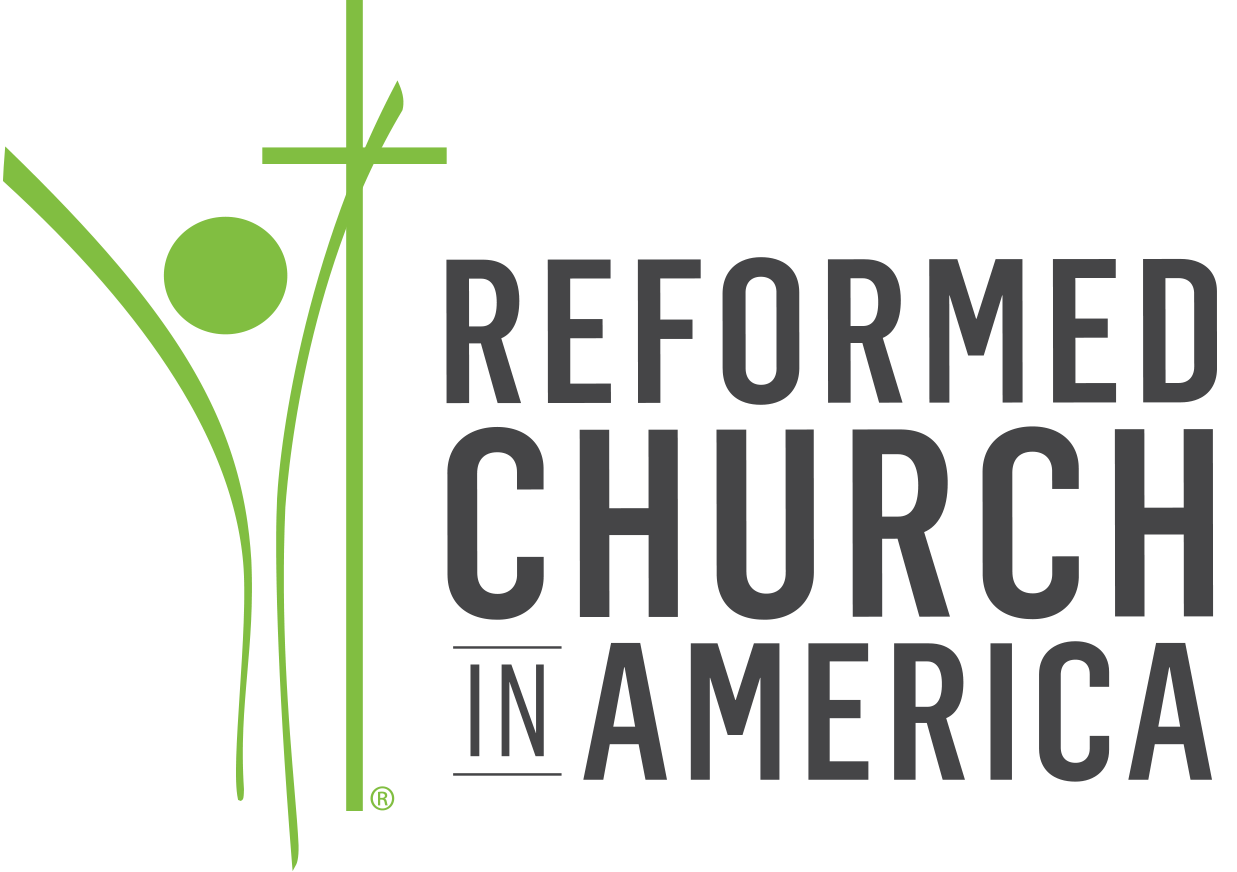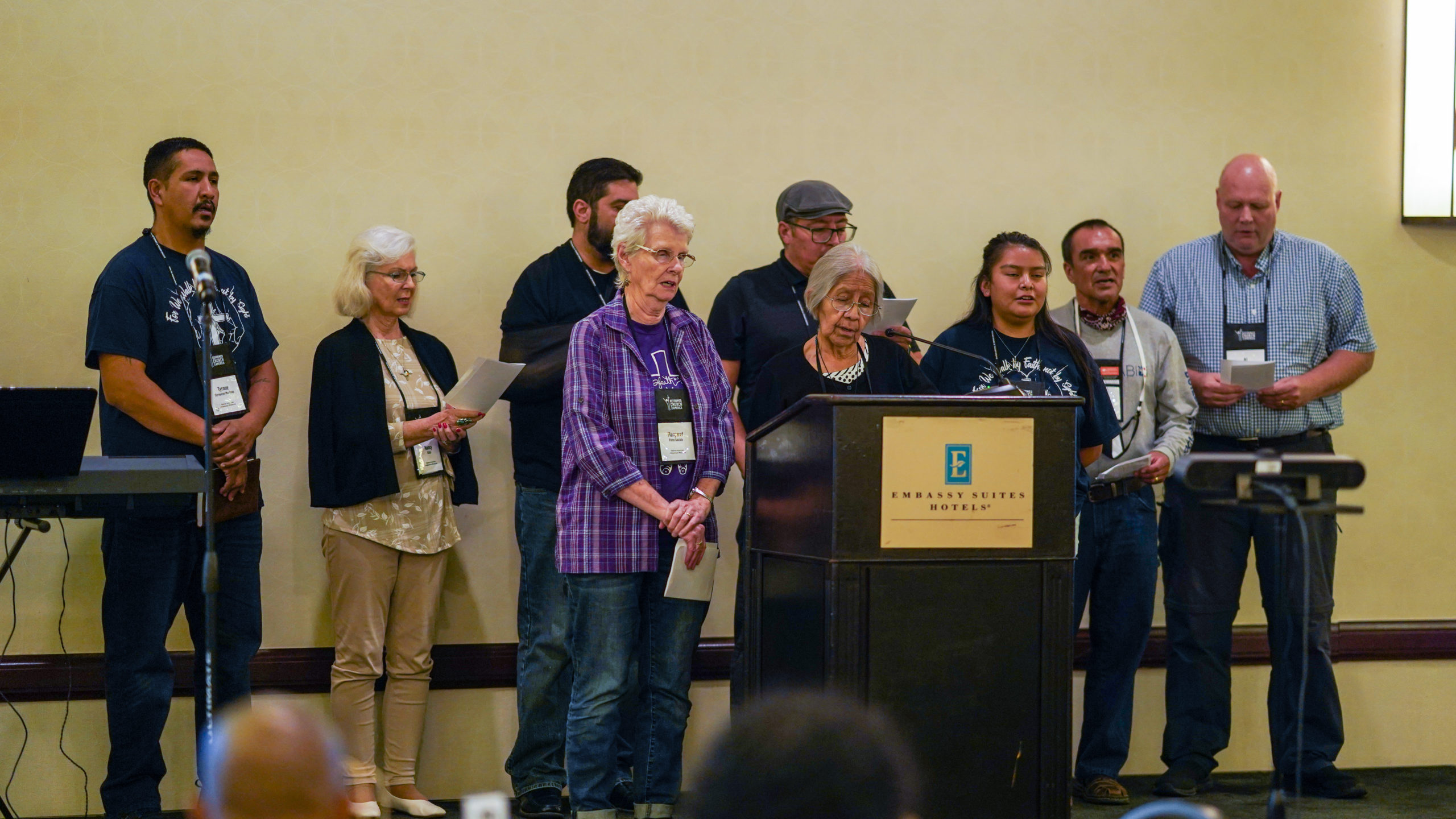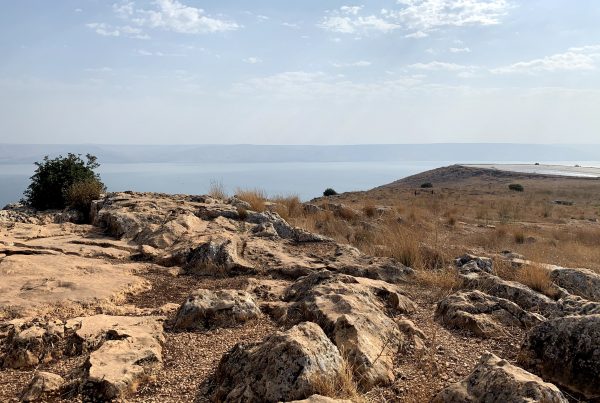Nathan Gullion was quite happy working as a pipefitter, but when God called him to ministry, he followed.
“I didn’t want to be ministering to First Nations people,” said Gullion, who is a member of the Bigstone Cree Nation in Alberta, Canada. “I didn’t want to go up that mountain because it’s so big.” There was a pause. “I can’t do that, but God can. I don’t think we’re bringing God there. God’s been there. I’m just coming to reveal Jesus.”
Gullion has been leading Bigstone Cree community members in worship at a new church in Calling Lake for about eight months now.
“Meth addicts walk in, people who smell like alcohol walk in, kids who are very disruptive walk in, and we sit with them,” Gullion said. “I was the ‘EGR’ in my family–‘extra grace required’–and now I can be that for others.”
As Gullion shared this story at the first RCA Native American and Indigenous Ministries (NAIM) Council meeting in two decades, he sensed God might be up to something bigger.
“Timing is everything. And I think the time is now. The Native people are ready,” Gullion said.
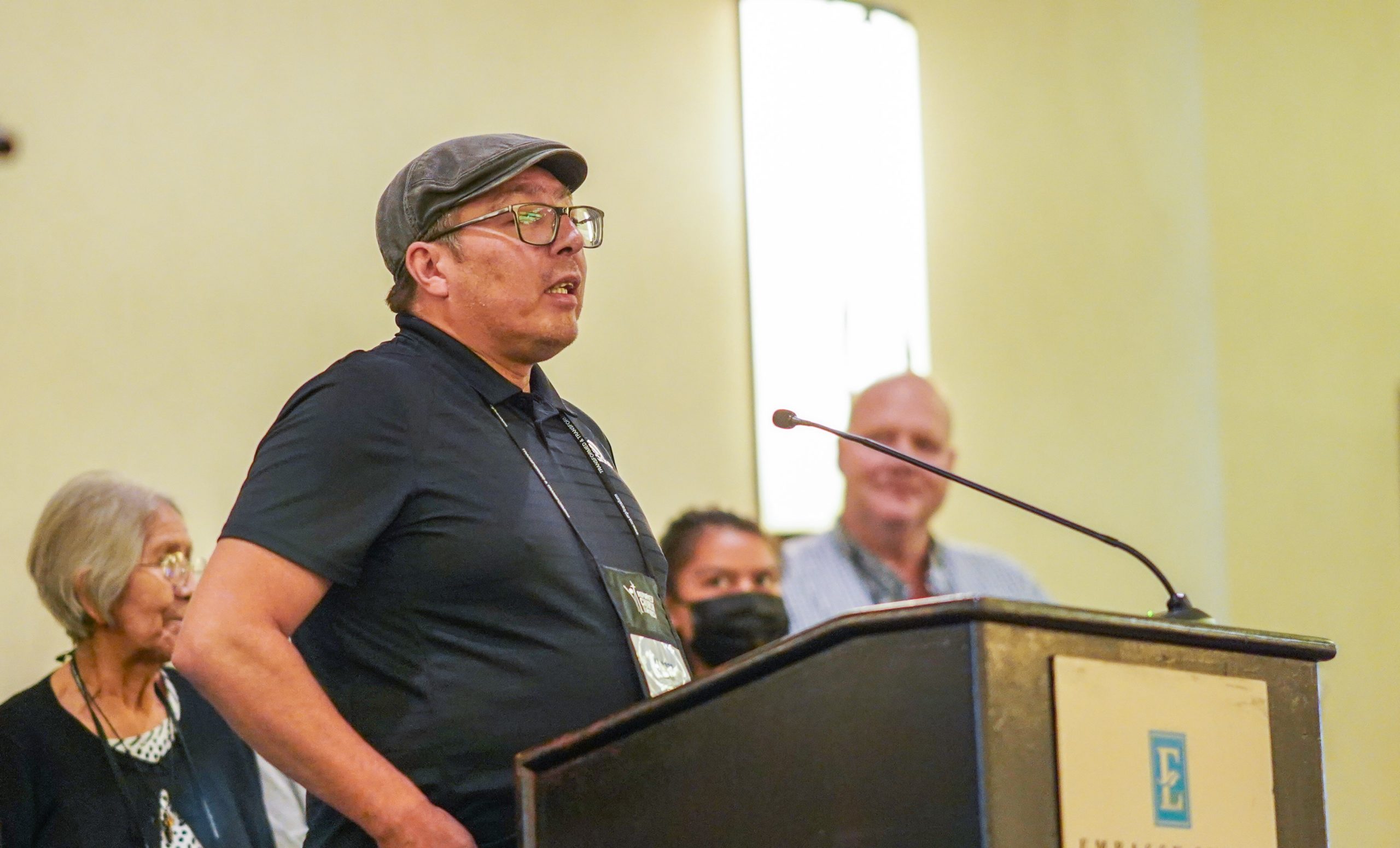
A time for renewal
The RCA General Synod reinstated the NAIM council as a fourth racial/ethnic council in June 2022. An American Indian Council originally formed in 1972. The council decided to transition from an advocacy ministry to a leadership development program in the form of an annual retreat a few decades later. NAIM stopped meeting as a council at that time.
During the reinstated council’s meeting in Chicago from August 23-25, Gullion wasn’t the only one who shared a sense that transformation was in the air.
“There were all these threads that came together to bring about the council’s reinstatement,” said George Montanari, as he led opening devotions. ”I sensed God’s Spirit doing something to relaunch this council in a way that would bring strength and renewal, that God would do something through our ministries with this reinstatement of the council. It seemed good to the Holy Spirit and to us.”
At the same time, the council did not ignore the long history of harm to Indigenous peoples in the name of the gospel, or the pain the RCA has caused in particular.
“The church as a whole, not just the Reformed church, has a lot to answer for from Native people,” said Nancy Gillis, a member of Winnebago Reformed Church in Nebraska. “All the different tribes have been evangelized to so many times, and each evangelist says, ‘We have the truth. We know the way.’ Through the boarding school era, so many Native people have drifted away from the church because it was often forced down their throats. That’s why it’s got to come from us as Native people. It’s got to come from us saying, ‘Yes, we may collectively have a horrendous history with the church, but what we have found as individuals [in our faith] is the strength we can use to draw our people to Jesus.’”
Led by Montanari, the council made space for these layers of hope and hurt through the practice of story-sharing. And in prayer, worship, and communal reflection, they invited the Holy Spirit to speak into the story they’re telling together.
A peek into the unfolding story: meet the council
The group gathered in Chicago included a five-member contingent from Mescalero Reformed Church in New Mexico.
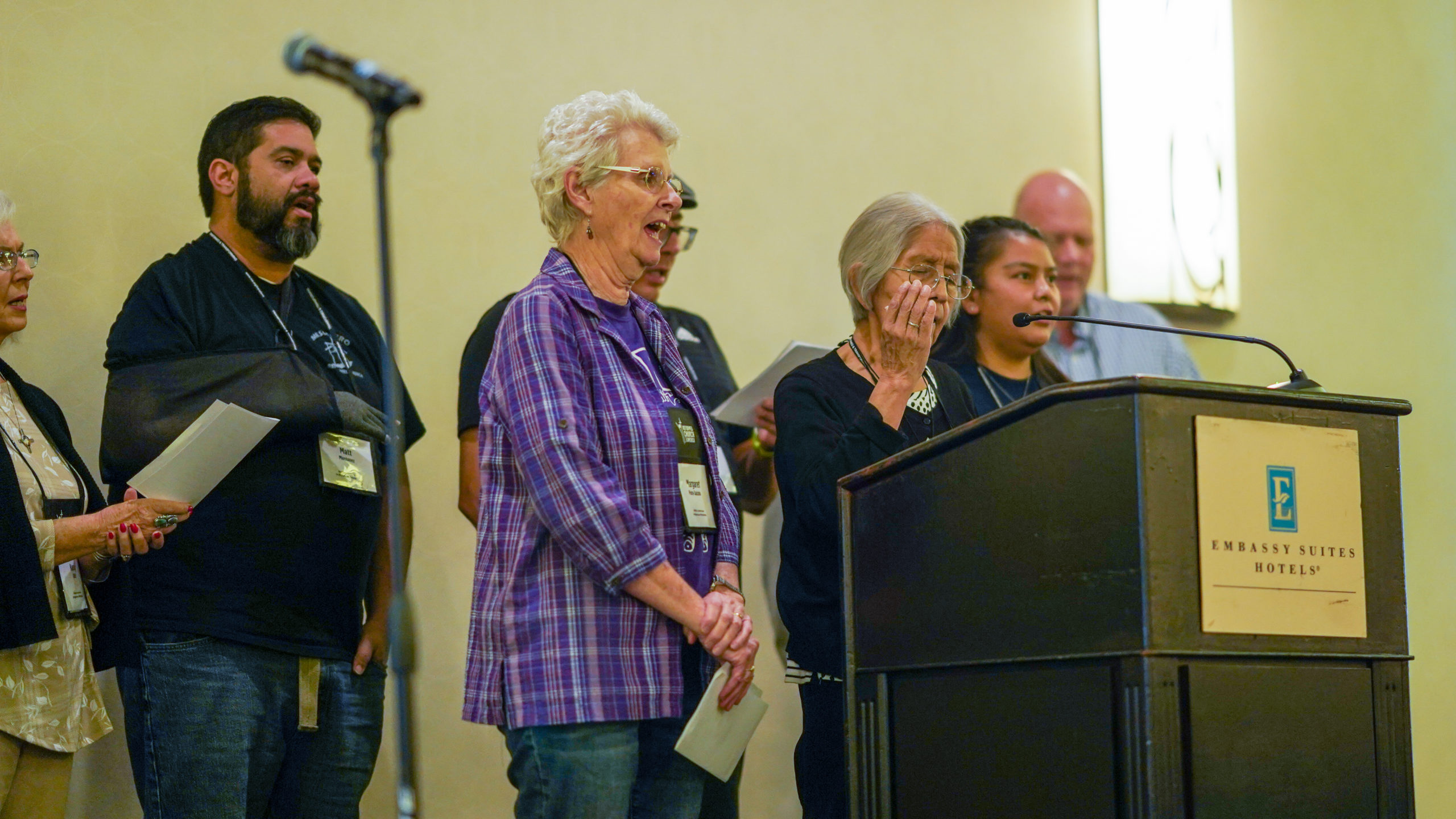
There was June Denny, a Mescalero elder whom the others call a “pillar of the church.” Denny grew up in the Reformed church, and her roots in Mescalero run deep.
Denny worked for the Bureau of Indian Affairs for 36 years. “I’m retired now, but it feels like I didn’t retire because of church life,” she says with a laugh.
Seated next to Denny was her granddaughter Vincea Nez. At 22 years old, Nez and her husband lead the Mescalero youth group. They’ve grown the ministry to 35 teens and young adults.
Marge Pinto-Salcido, a semi-retired nurse and another “church pillar,” found a home in the Mescalero Apache community after growing up in a Navaho community, though she’s not Native herself. She married into the community, and her children are tribal members.
Matthew Montanez, who pastors Mescalero Reformed, jokingly described himself as “Puerto Rican Mescalero.”
Montanez is big on outreach and wants to see more young men get involved in the church. He has an against-the-odds mentoring relationship with Tyrone Cervantes-Martinez, the fifth Mescalero Reformed member in attendance.
Cervantes-Martinez leads the weekly men’s group at Mescalero and helps Montanez with outreach. At first glance, this might seem like a familiar pairing: a pastor and a rising leader from the congregation.
But the original reason they have a close bond today is a little surprising: years before, Tyrone had children with the woman who would later become Matthew’s wife. Seeing how Tyrone struggled with addiction, Matthew helped Tyrone to seek treatment so he could be there for his children, now their shared children.
“While I was in treatment, I told myself I would never go back to Mescalero; I had too much bad history there,” Cervantes-Martinez says. “But I felt God calling me to go back and make a change. So I met with Matthew and started doing outreach and discipleship with him. I kind of grew into the church, and now I’m attending Western Theological Seminary with Matthew to get my masters of divinity degree.
“Marge and June probably remember me when I was a child. My late brother used to go to VBS at the Reformed church, and he convinced me to go. So I went, and it was cool. Someone found old records recently with my younger brother on the list. It really moved me. … Marge and June are pillars of the church. And it does say elders are to teach the young, so I want to learn from them.”
Beyond those from Mescalero Reformed, four other leaders from Native churches and supporting churches were part of this first meeting of the reinstated council.
Nancy Gillis represented Winnebago Reformed (Winnebago, Nebraska), where she’s been a member since 1987. Gillis is of Cherokee and Choctaw descent, as well as Scots-Irish.
“I was the one who ‘passed’ in my family,” Gillis shared at the council’s meeting. “When we stopped for gas in Oklahoma growing up, my grandpa would send me in to pay because I was the one who passed as non-Native in situations where Natives were not welcome. My great-grandmother told me I would wear two dresses. And that’s been true, finding my place as a teacher of Native studies and history, telling the stories from both sides.”
A retired professor, Gillis is an elder and worship coordinator at her church and leads the pastoral search team.
Kenneth Samela represented Jicarilla Apache Reformed Church in Dulce, New Mexico. Samela leads a corrections ministry in Dulce on Sundays and teaches from the Bible at the dormitory where he is the maintenance engineer.
Rev. Al Platt joined Nate Gullion on the trip from Alberta. Platt pastors Athabasca Reformed, the supporting church for Calling Lake Community Church, Gullion’s new church. Calling Lake grew out of Athabasca Reformed’s after-school program, where Gullion started out as a seminary intern for Athabasca.
Connecting through shared experiences
They came from different places and represented different tribal groups, but the council participants found unity in how much they shared.
“I have also been to another one of these macro gatherings. We were sitting there, and I was listening to the same story that I grew up in but 2,000 miles away. That opened my eyes. I didn’t realize how similar we are,” Gullion said.
“I have been praying about this, and I embrace all of us,” Denny said. “Growing up, my mother always took us to the Reformed church. I interacted with other Native people from different tribes. We shared like we’re doing now with other Native students, and it was the foundation of my faith.”
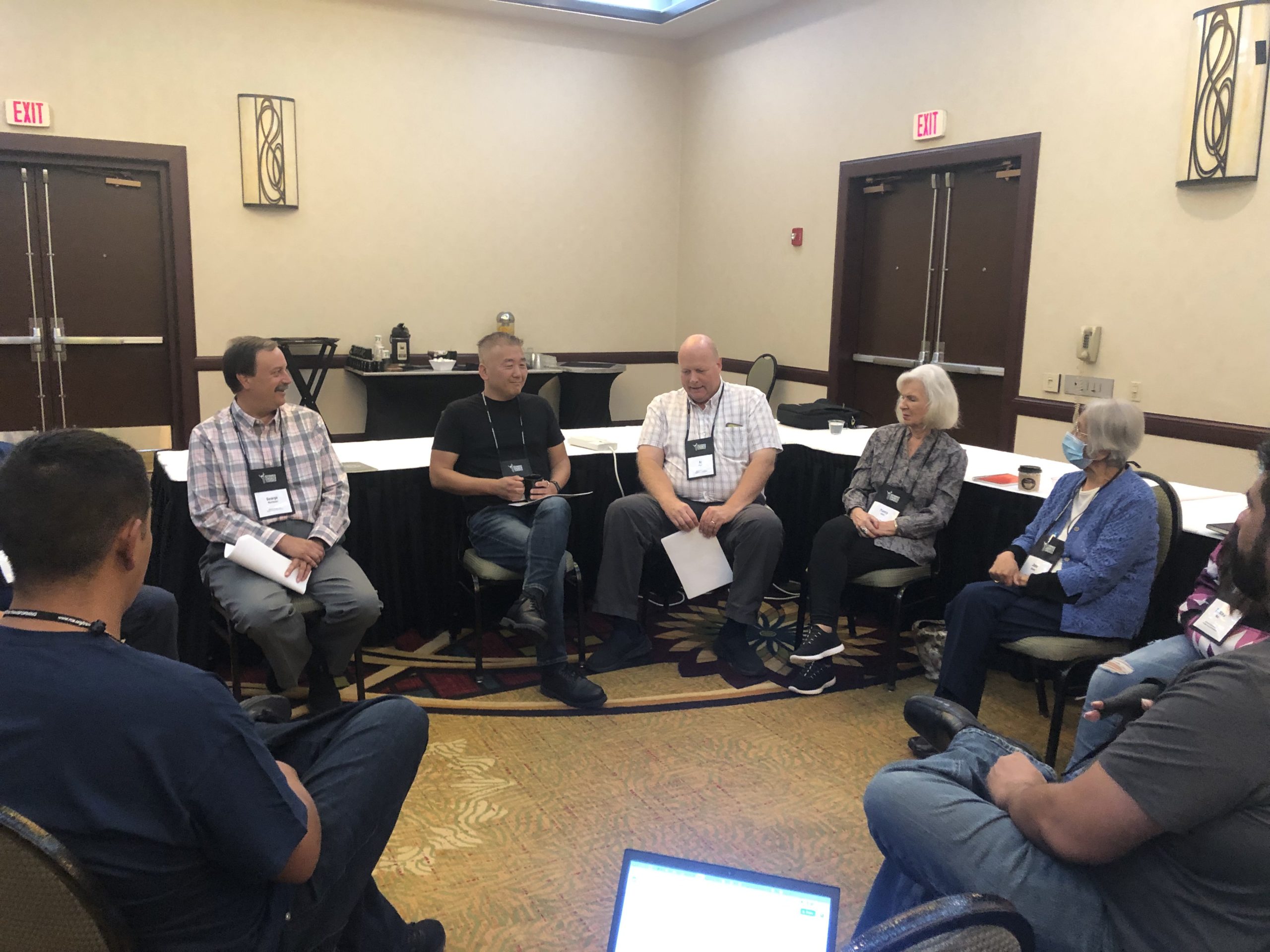
The uniqueness of the tribal context also emerged as a theme–representing both a strength and a challenge.
“We have challenges in reservations that don’t happen in the rest of America. That’s why this council is important,” Montanez said.
“Our tribes are sovereign nations within a nation, which happens nowhere else in the world,” Gillis added. “Our life on the reservation is very different from the rest of America, even from urban Indians. … We’re separate, and yet we have so much in common.”
The group seemed to share a strong sense of hospitality and grace in their churches.
“There’s a kid in my church who recently found his mom hanging from suicide. Some people would say he’s too disruptive during church,” Gullion said. “To them, it might be a distraction. But not to me. Who cares if he’s running around the church? At least he’s here. Being First Nations, our church sounds different. It smells different. It feels different.”
Taking steps forward together
As one way of moving forward together, the council was eager to continue to share stories with each other. They agreed that frequent Zoom calls would be a helpful source of connection. And the prospect of visiting each other’s churches in person generated even more enthusiasm.
“If there was a meeting like this at Jicarilla Apache Church, it would be big news, especially if you involved the kids,” Samela said.
The other churches were equally excited to host and to experience each other’s communities.
The council also saw value in sharing stories and experiences with the RCA more broadly. A Sankofa journey–an immersive trip that invites you to look back at history in order to move forward–came up as one way this might happen. In June, synod voted to fund Sankofa journeys for the next three years.
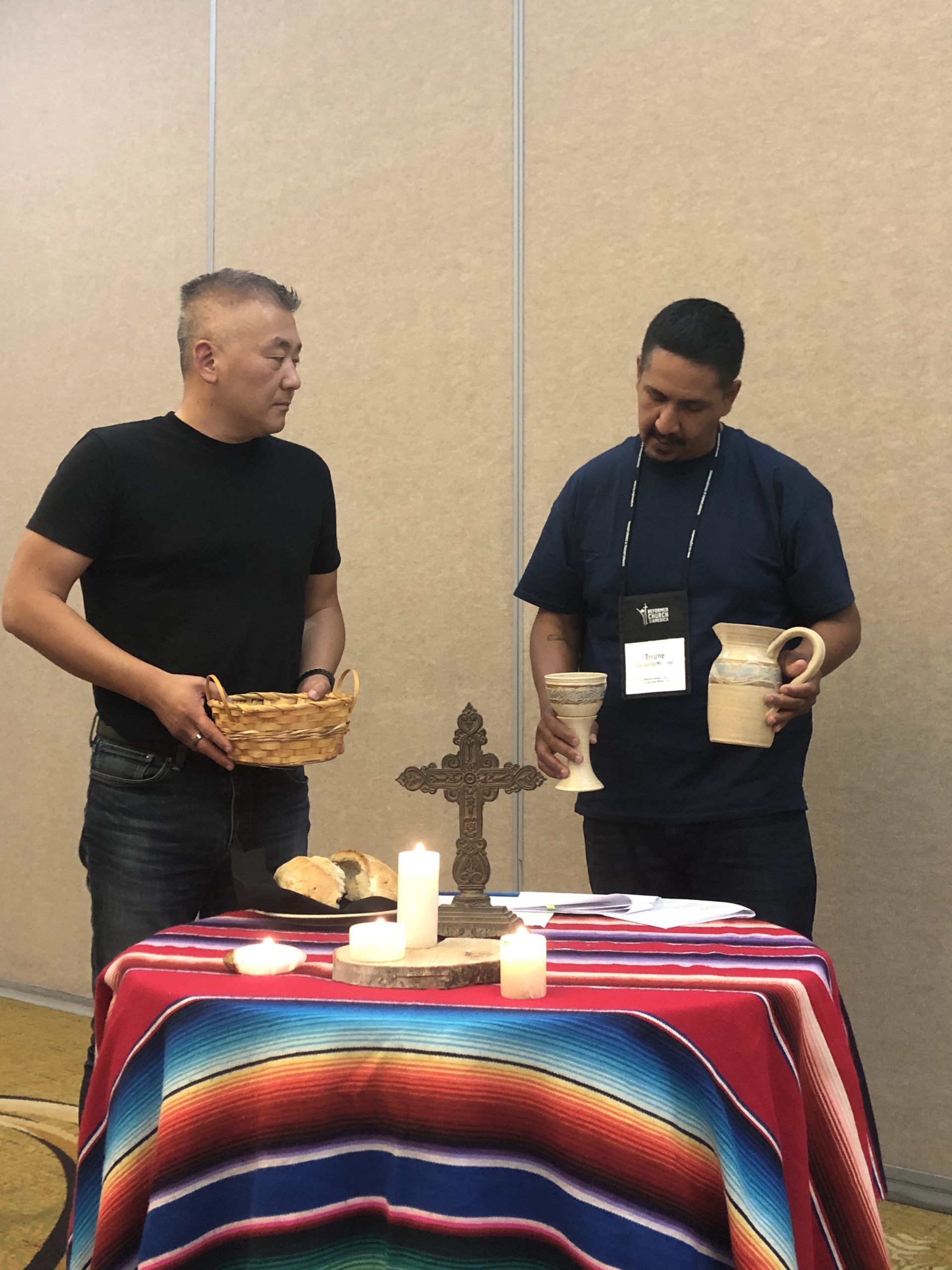
Leadership development and pastoral formation bubbled up as priorities for NAIM moving forward as well. The Native churches in the RCA have overwhelmingly been led by non-Native pastors.
Cervantes-Martinez is going to seminary so that he can help change that.
“I am a Native American and feel led to become a pastor on a reservation. I want to be a pastor to Native American people. We can do it. I say to Matt, ‘I appreciate you accepting the call to minister at the reservation, but God has put this on my heart.’”
Montanez is fully supportive. “I think I’m the only pastor trying to raise people up to get myself fired,” he said.
Reconciliation and the RCA
“God has a plan and a purpose for us. Who will be here to walk alongside us? Is the RCA going to support us?” Denny wondered aloud. She wasn’t alone.
The council was excited to work together with one another, but questions about the RCA as a whole remained. How can the council be reintegrated into the RCA fully? Can the RCA actually be trusted to come alongside NAIM? Will the RCA embrace Native people ministering among Native people when their ways of doing ministry look different? How will churches leaving the RCA and denominational restructuring impact NAIM?
The group expressed a desire for the RCA to come alongside NAIM and recognize the rich gifts that tribal communities bring to the church. However, they also feared the RCA might try to control them or misunderstand their context.
Gillis shared a four-step process that could serve as a guide for bringing about restoration in the relationship between Native Americans and the RCA. She used the process with her students when she taught Native American history and cultures:
“We would go through four Rs. One is recognition this is true stuff. It really happened.
“Then there has to be repentance, saying, ‘I own this.’ Native people also own a lot of their difficult history. We’ve done a lot to ourselves, too. And for those of us who are mixed race, we have both. We can’t go backwards. The repentance has to do with acknowledging the way I live today is the direct result of what came before, both the pain and the good stuff.
“Third, there has to be a point of reconciliation, coming together, seeing how we all have history connected to the past and the present.
“And finally, there’s restoration. So, for my education majors, I would say, ‘How would you restore a balance to this?’ No more in my classroom is it Ten Little Indians. The kids in my class are going to learn the truth appropriate to their age groups. We’re getting rid of those stereotypes. Similar steps are used with addiction recovery and domestic violence. … We’ve got to make that conscious move forward.”
As the council meeting drew to a close, RCA general secretary Eddy Alemán spoke to the council about his vision for the denomination. Nate Pyle also spoke on behalf of the Commission on Race and Ethnicity (CORE) about the work CORE is doing and how it might intersect with NAIM.
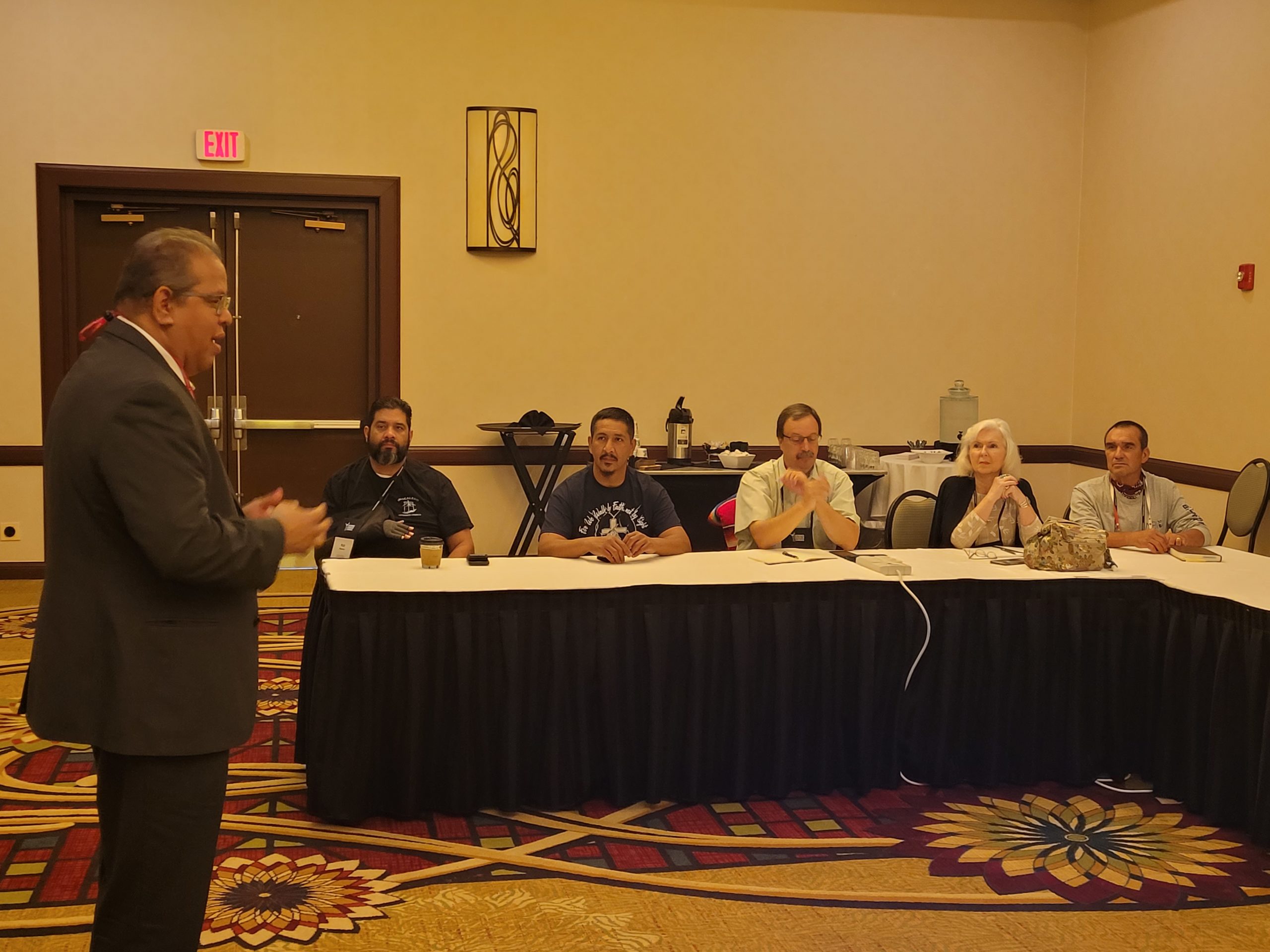
“I know in the past, things have not been the way we would want. But I promise that this time things will be different,” Alemán acknowledged. “I commit to you that we will be supporting you; we will be with you. We will not be telling you what to do or controlling you, but we will be with you.
“We’re casting a vision for a Revelation 7:9 church, where every tribe and every tongue is worshiping together. As I prayed about it, I said, ‘God, I don’t want to wait until I get to heaven to see that. I want to see that vision now.’ You’re an important part of that vision.”
